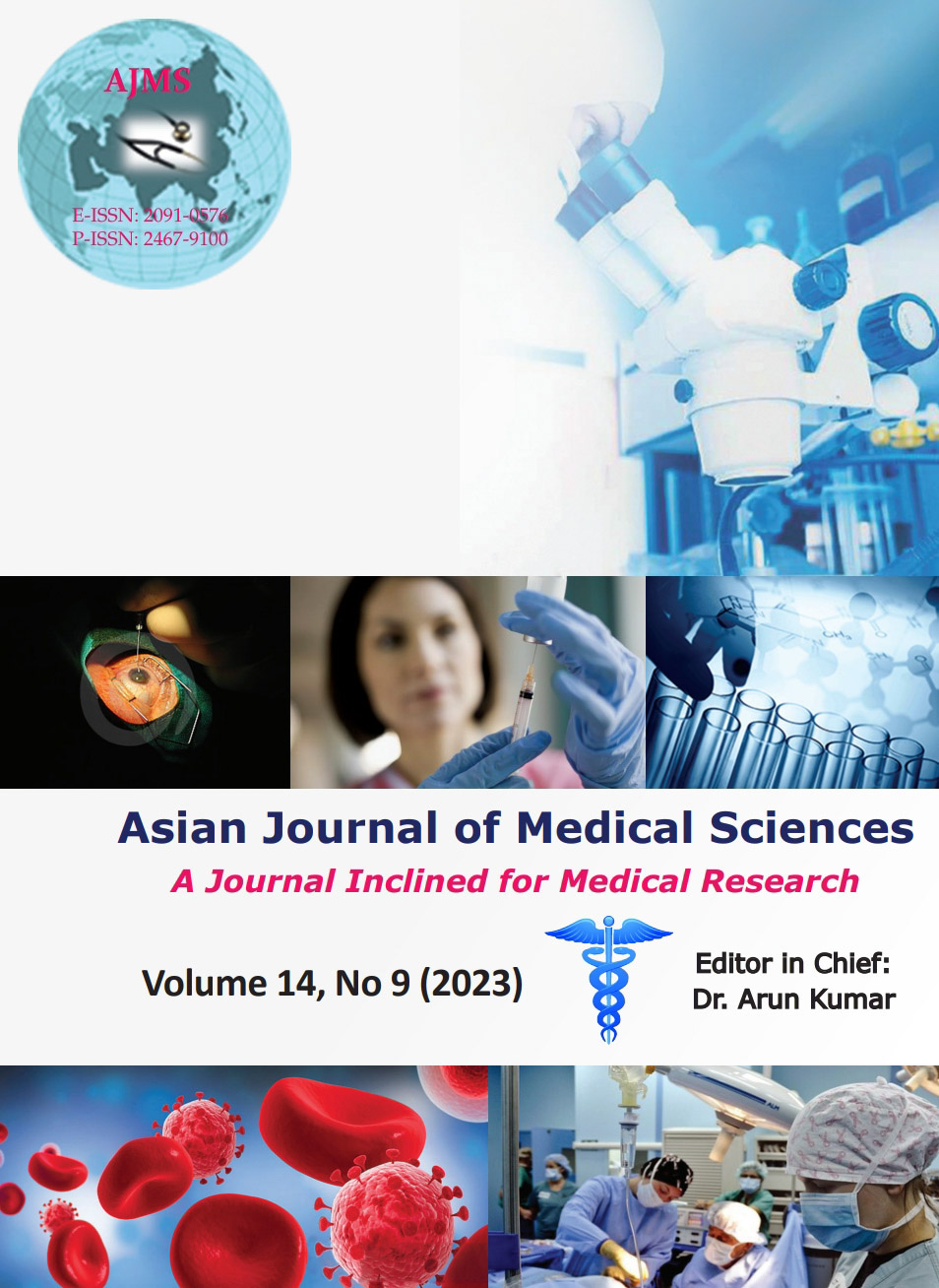Demography, clinical features, and outcome of fungal keratitis presenting in tertiary eye care in Nepal
Keywords:
Fungal keratitis; Fungal ulcer; Infective keratitisAbstract
Background: Fungal keratitis is an important cause of ocular morbidity in developing countries.
Aims and Objectives: To study fungal keratitis in detail along with its outcome.
Materials and Methods: This is a retrospective study of fungal keratitis that had presented between October 2013 and March 2015.
Results: 168 fungal ulcers were enrolled. 145 had fungus isolated in the culture; 23 had fungal elements seen only in potassium hydroxide mount examination. The average age of patients was 46.7 years. 55.3% were male. 75% were farmers. Patients presented at an average of 23.6 days since the onset of symptoms. In 85 cases (50.6%), trauma was the risk factor followed by steroid use (12.5%, n=21) and diabetes mellitus (7.7%, n=13). 72 out of 85 cases of trauma were due to vegetative matter. 94 (55.9%) ulcers had hypopyon. 56 (33.3%) ulcers had infiltrate size of ≥¼ of corneal surface. 12 (7.1%) ulcers were perforated at presentation. Out of 145 fungal isolates, Aspergillus species and Fusarium species were isolated in equal numbers (n=41, 28.3% each), followed by unidentified hyaline fungus (14.4%, n=21). The ulcers were treated with combination of topical natamycin 5% and fluconazole 0.3% with or without oral fluconazole. 111 (66.1%) fungal ulcers improved with medical treatment, 37 (n=22.0%) underwent therapeutic penetrating keratoplasty, 6 (3.6%) were eviscerated and outcome unknown in 14 (8.3%). Smaller-sized ulcers, ulcers without hypopyon and those presenting within 7 days had better prognosis (>80% healing with medical treatment) with statistical significance.
Conclusion: Farmers were constantly at risk of fungal keratitis due to work-related trauma. Fungal ulcers presented late with large sized ulcers and with complications, thus making treatment challenging and necessitating surgical intervention. Timely treatment had better prognosis.
Downloads
Downloads
Published
How to Cite
Issue
Section
License
Copyright (c) 2023 Asian Journal of Medical Sciences

This work is licensed under a Creative Commons Attribution-NonCommercial 4.0 International License.
Authors who publish with this journal agree to the following terms:
- The journal holds copyright and publishes the work under a Creative Commons CC-BY-NC license that permits use, distribution and reprduction in any medium, provided the original work is properly cited and is not used for commercial purposes. The journal should be recognised as the original publisher of this work.
- Authors are able to enter into separate, additional contractual arrangements for the non-exclusive distribution of the journal's published version of the work (e.g., post it to an institutional repository or publish it in a book), with an acknowledgement of its initial publication in this journal.
- Authors are permitted and encouraged to post their work online (e.g., in institutional repositories or on their website) prior to and during the submission process, as it can lead to productive exchanges, as well as earlier and greater citation of published work (See The Effect of Open Access).




